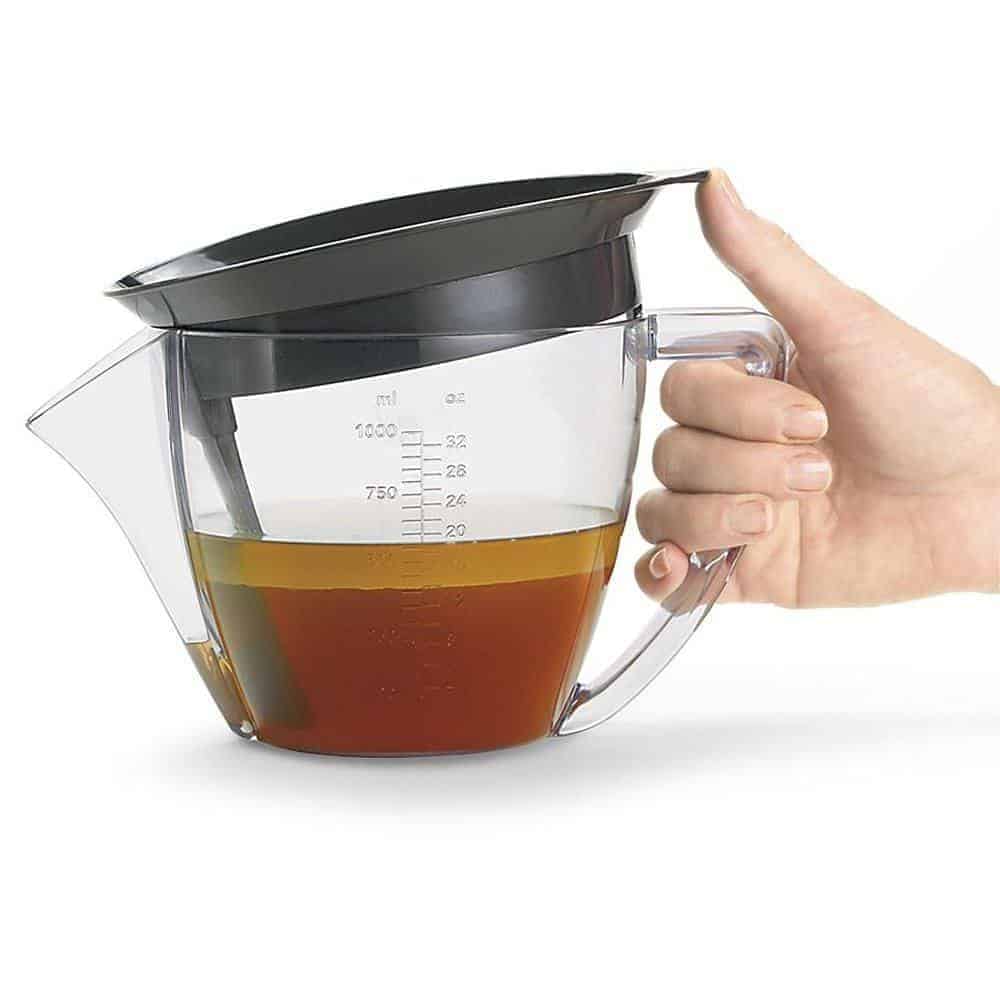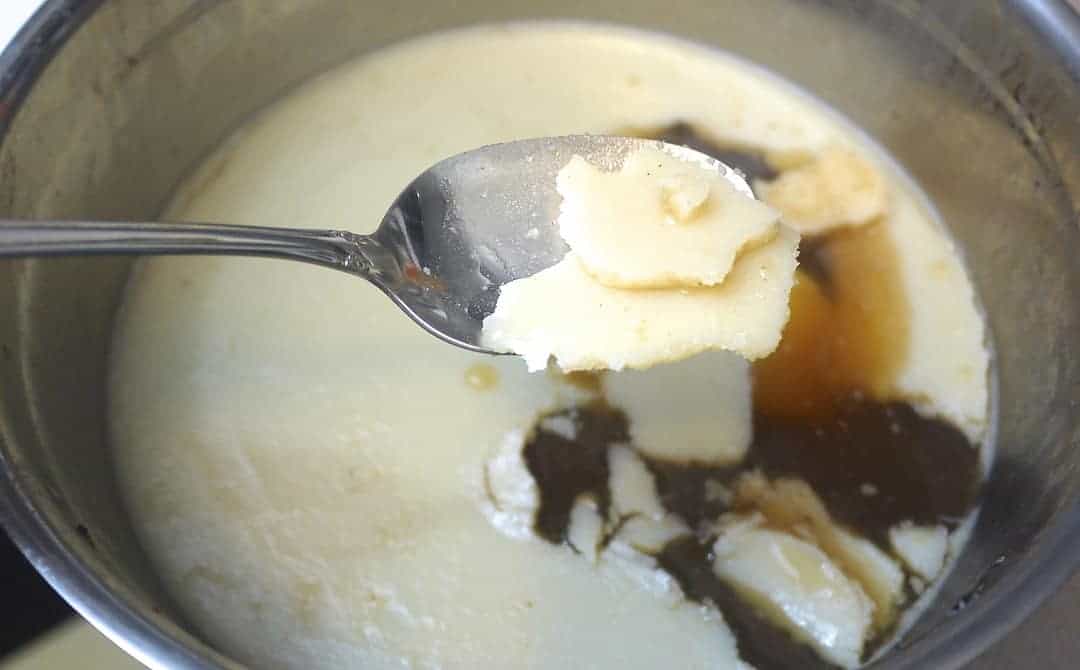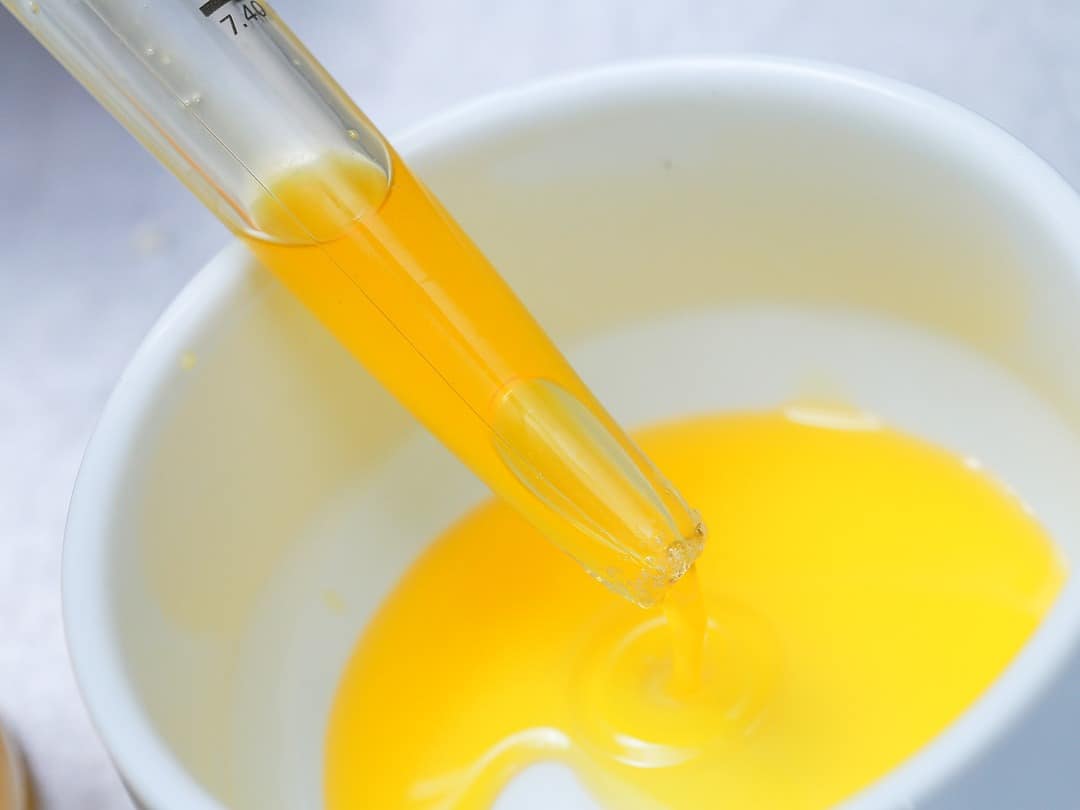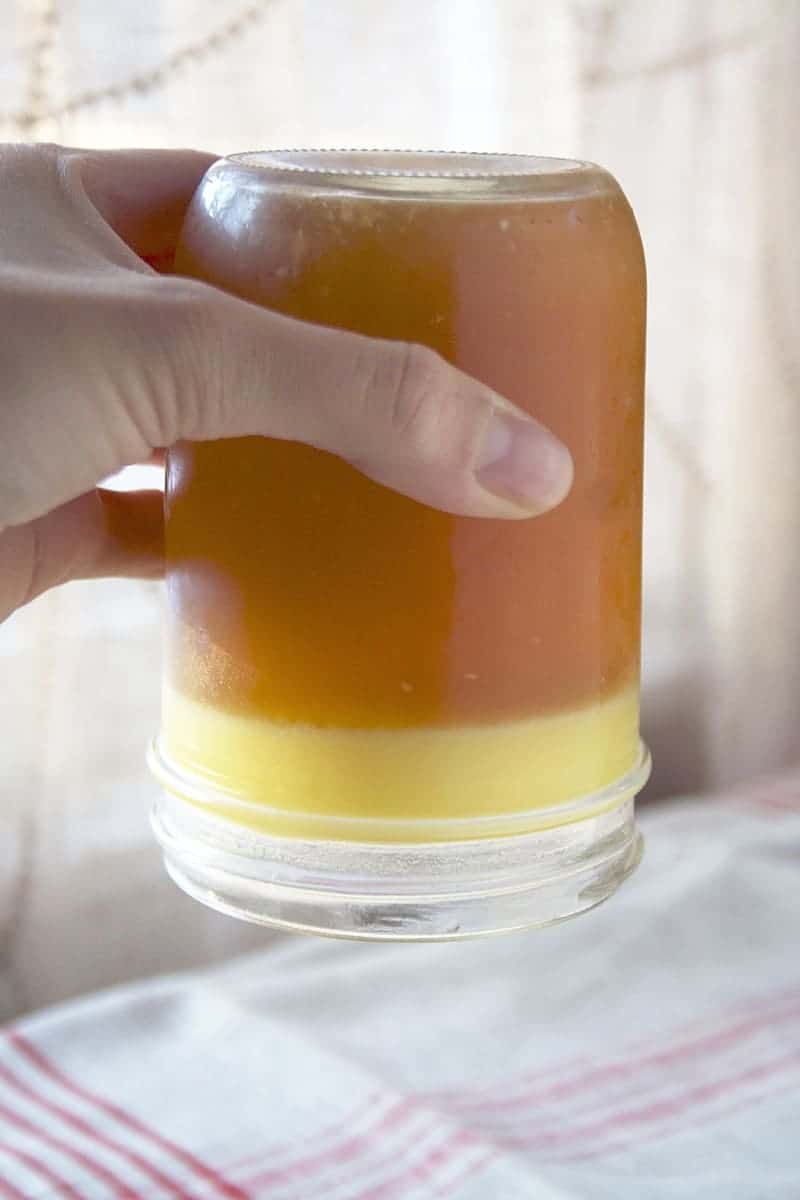I have never heard of a fat separator, until my daughter joined culinary school last year. She came home one day asking if we have a fat separator, I must’ve had a stupefied expression on my face because she burst out laughing.
We went out shopping for a fat separator the same day, my daughter becoming quite an expert on it after using different fat separators at her school.
Learning how to use a fat separator is very easy. It’s so convenient you won’t be able to wait until you need to cook your next meat stock!
More...
What is a Fat Separator?
A fat separator is a container intended to separate fat from your meat stock. Just to make sure everyone is on the same page, meat stock is the meaty and tasty juice you get from boiling any form of meat.
There are a lot of meat stock recipes available on the web. Meat stocks are a very good base to make gravy which gives them that very rounded but hard to define taste, and you can also make a lot of different soups with meat stock.
I personally prefer to make meat stocks from boiling meat bones with some of the fat and ligaments still on it. Remember, the closer your meat is to the bone, and the more fat you have onyour meat, the tastier it also is.
Complicated? It is. Because you get superb tasting stock from all these fat but no one really likes to eat greasy food.
We will be referring to the pure juice of the meat stock without the fat as stock juices throughoutthe article to avoid confusion.
Fat Separation the old fashioned way
In order for you to appreciate the ease of how to use a fat separator, I will tell you how it is done manually, and the old fashioned way. This is what I have gotten old doing and I can’t say I miss doing it.
The thing you have to understand is that fat fluid is lighter than your stock juices. Following that basic principle, fat always floats up to the surface within a few minutes of cooling.
For all of these old fashioned methods, always use a clear container so you can see what you are doing.You really don’t want to waste any of your stock juice or mistakenly get fat back into it after you have already painstakingly removed them.
1. The Spoon method
After you have allowed your meat stock to cool for a few minutes, you will notice the fat floating to the surface. As I have mentioned earlier, it is best to use a clear container so you can see whatyou are doing.
The spoon method works simply by scooping the floating fat carefully out of your stock. This is a very slow method but I did have to do it several times whenever I am out of options.
What I really, really don’t like about this method is that it is so easy to accidentally stir the entire container, and if I do, I will have to wait for everything to settle again and for the fat to float back up. It is also hard to get all of the fat out without wasting some of my good stock juice.
2. The Turkey Baster Method
Using a turkey baster is very effective and a lot better than using a spoon to remove the fat from your stock juice. Just like with the spoon method, simply wait for your stock to cool and you will notice all those gooey fat floating to the surface.
Once you see the fat settling on top, press the bulb of your turkey baster and dip your baster to the bottom of your container where the stock juice is. Release the bulb and you will notice the stock juice being sucked in to your baster.
Transfer the stock juice to another container and keep on repeating the whole process until you have most, if not all of your stock juice.
This is an effective method but quite strenuous. All the squeezing and releasing can be a bit tasking especially if you have a lot of stock to get through. While it is effective, it is rather time consuming.
3. The Freezer Method
Another traditional way of removing fat from your stock juice is by placing it in the freezer for about 10 minutes. This will cause the fat to harden on the surface of your container, becoming solid. You can easily, but carefully, pry it away from your stock juice and you are done.
This used to be my favorite method for removing fat from my stock juice because of how easy it is. Usually though, I would have to reheat my stock juice again afterwards since putting it in the freezer would have caused it to cool.
A cold stock juice is definitely no good to me and it can be quite difficult if I have a lot of stock since it is hard to get everything in the freezer all at the same time, not to mention the difficulty of trying to fit an entire pot in.
If you are like me, you probably don’t have that much room in your freezer to fit in a pot most ofthe time, anyway.
Out with the old, on with the new
Now that you know how separating fat can be done manually, let’s talk about how these wonderful and awesome fat separators have made my life so easy, and how it can make yoursjust as easy.
The fat separator is a very simple container with a spout. It looks just like a kettle, made out of clear materials that can be made from either high-heat resistant plastic or glass. Just to give you abetter picture, you may also compare a fat separator to a measuring cup that has a spout.
Following the basic principle of how fat floats to the surface while good stock stays at the bottom, the spout of the fat separator is typically right at the very bottom of the container to ensure that only good stock will get through.
A rubber or silicone stopper is placed at the tip ofthe spout to make sure that no fat or stock will be floating through its length until you are ready to pour.
How to Use a Fat Separator

Via Amazon.com
This is very quick and easy.
- Make sure that the stopper is in place and fit snugly in the snout.
- Place the strainer at the top of your fat separator and line it with some coffee filter paper if you have one available, to strain your stock better.
- Carefully pour your stock into the fat separator. The solid imperfections should be strained well.
- Leave stock to settle to for about 5-10 minutes or until you can see the fat clearly separated from the stock juice.
- Slowly remove the rubber stopper from the end of the snout.
- Slowly pour your stock juice into a new container, and you will notice the fat being leftbehind.
- Make sure you pour only the stock juice and not the fat.
- Your stock juice is now ready to use.
What to Look For in a Fat Separator
I have a few requirements on what I want and need my fat separator to be, based on having tried some fat separators over the past year that didn’t really work out as conveniently as it could have.

Via Amazon.com
1. Choose the Right Size.
Having more than one fat separator in different sizes will serve youwell in the long run, but if you are only willing to buy one right now, choose the size that will fit the amount of stock you need to prepare most of the time, if not all the time.
2. Convenient Handles
Choose a fat separator with very convenient handles that are both sturdy and easy to grip. Personally, I really liked the handle of the Bellemain Fat Separator and it just might be worth your while to check itout.
3. Choose the one with a Strainer on Top
It is to make sure you don’t get solid bits into your stock juices. This way, you get everything done with nothing more required from you. Most fat separator units includes a strainer so you just need to make sure you don’tend up without one.
4. Choose the one featuring a High Splash Proof Shield Front

Via Amazon.com
Because you will be tilting your fat separator to pour the stock juice out, choose a model that features a high splash proof shield front. Like the Bellemain Fat Separator, the Vitafor Home models also has this feature for a lower price, but withoutthe other features of Bellemain.
5. Decide if you want it Heat proof, Dishwasher-Safe
Those are very important considerations that you don’t want to forget since your overall satisfaction depends ongetting everything you want.
It never ceases to amaze me how old fashioned and traditional methods can be simplified by these wonderful innovations.
Using a fat separator definitely made stock preparation so much easier and I definitely recommend to everyone I know, not only to you, but even my friends around town.
Feel free to leave a comment below if you have any questions. Happy cooking!
Beside fats, if you're worried about calories, you can alos check out How to cut down calories when with friends.






